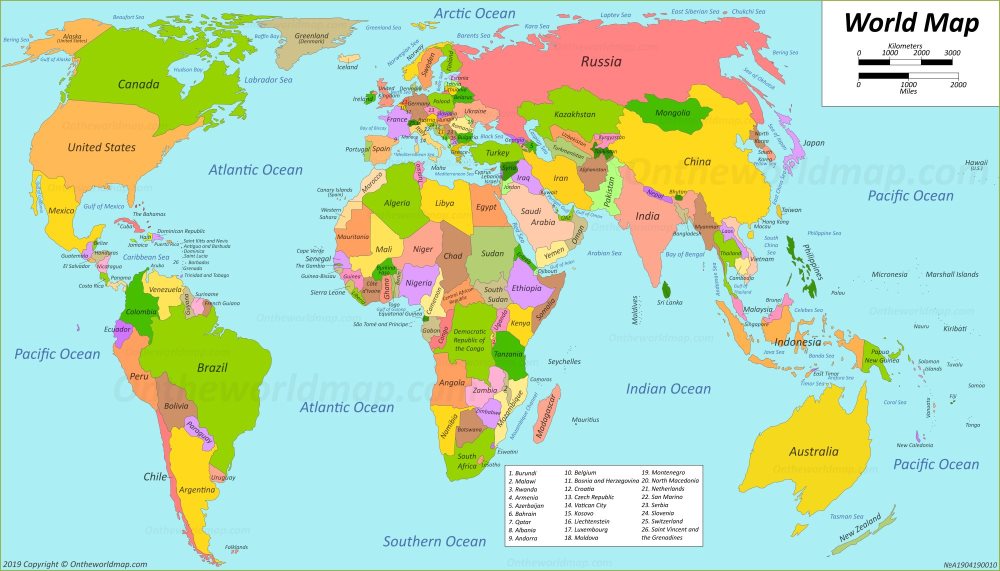
Cartography is the science of making geographic maps. Travelers who explored North America received important information from plans that local Eskimos drew on pieces of bark or simply drew in the sand. Here are some interesting facts about geographic maps.
During the Renaissance, the art of cartographers was appreciated so much that the walls of the apartments were decorated with maps just like the paintings of artists. Before the invention of printing, cards were drawn by hand, they were very expensive, and often many drawings were applied to them, so that they really were not much inferior to paintings.
On modern maps, north is almost always at the top. This is due, firstly, to the fact that when orienting along the stars, which was the main one for travelers of antiquity, the most important role was played by the North Star, pointing to the north. Secondly, in ancient times, when Western civilization developed on the shores of the Mediterranean Sea, its northern part was first studied best of all, and on the maps of that time this part was placed on top. But in ancient China, the south was placed at the top of the maps, and the east was placed on the old Arab maps. Finally, the image at the top of the maps of the north prevailed everywhere after the compass, an arrow, which always points to the north, came into wide use.
In the vast expanses of the vast Pacific Ocean, which occupies a good half of the entire surface of the planet, cartographers have identified a conditional point, which is the most remote part of the world ocean from any land area. This point is called the pole of inaccessibility. Its other unofficial name is "Point Nemo". It was given in honor of the mysterious Captain Nemo, a character in the novel "20 Thousand Leagues Under the Sea" by the French writer Jules Verne. The nearest inhabited land is located at a distance of 2 688 km from the Pole of Inaccessibility. Since the orbit of the International Space Station passes over it, it periodically turns out that the nearest settlement is at a distance of 400 km from the Pole of Inaccessibility, but from above - in space.
In Brazil, a football stadium was built on the very spot where the equator passes. It is called "Estadio Milton Correa", but it is also called "Zeran" ("Big Zero"). Because the equator is the zero parallel and is considered to go straight through the center of the stadium from where the ball is thrown in at the start of the game. As a result, the playing football teams defend the goal, which is located in two different hemispheres. One team defends the gate in the Northern Hemisphere, and the other in the Southern.
In the United States, a place of pilgrimage for tourists has become a point, being in which you can simultaneously visit four states at once. Their borders were drawn in such a way that they converge at one point. If you get on all fours at this point, you can place your left arm in Utah, your right arm in Colorado, your left leg in Arizona, and your right leg in New Mexico.
One tenth of the surface of our planet is covered with eternal ice. The surface of the glaciers reaches 15 million square meters. km. These ices represent three quarters of all drinking water supplies on Earth. If we count only unfrozen water, it turns out that one-fifth of all its reserves are located in Lake Baikal.
The name of the island state of Puerto Rico in the Caribbean Sea arose as a result of a mistake by cartographers. When Christopher Columbus discovered this island, he named it San Juan after Saint John. Later, a small town arose on the island, which was named Puerto Rico. Translated from Spanish, a rich port. And then, when putting the names on the map, the cartographers confused the name of the city and the name of the island. After the Spanish-American War in 1898, the island became the independent state of Puerto Rico.
When British farmers settled in Australia, flocks of wild dingo dogs began to cause enormous damage, attacking their flocks of sheep. To protect against these predators, the decision was made to build a huge fence across the continent. And it was built in the 80s of the XIX century, and its length was 5,614 km, which exceeds the border between China and Russia, which is 4,209 km.
I hope you learned a lot from this article. Start exploring our world better. It is very interesting!






























